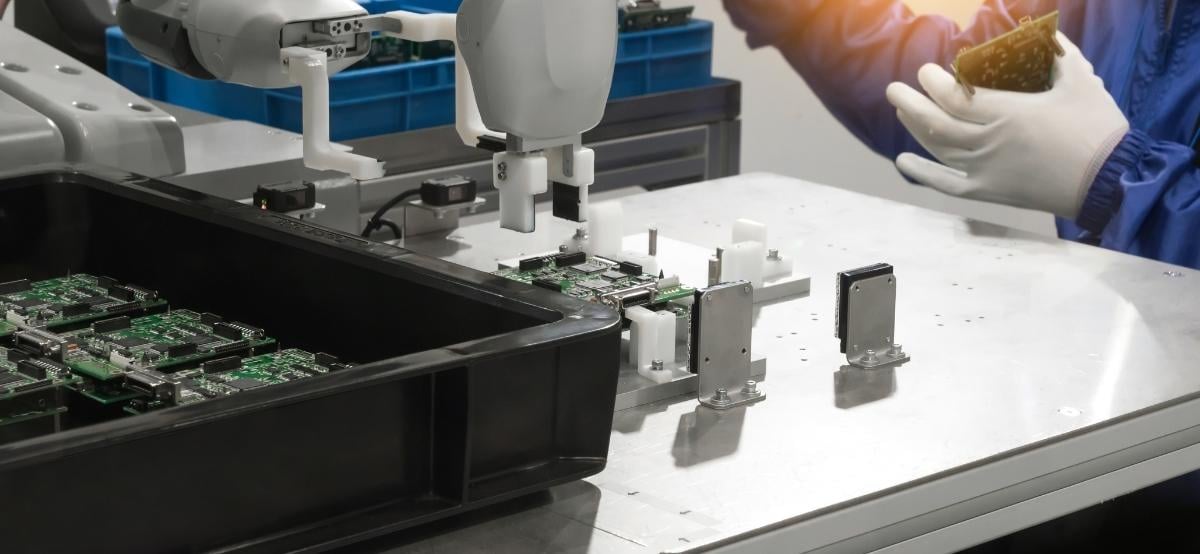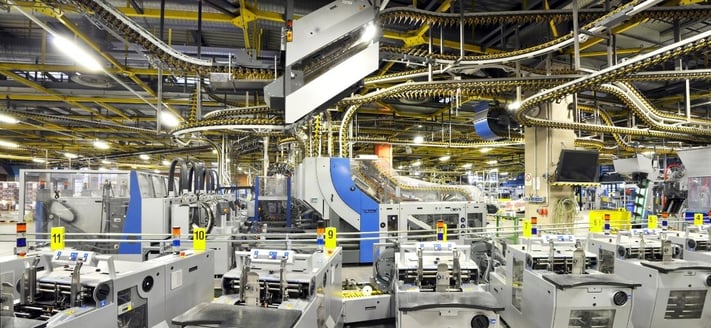Humans are incredibly adaptable and innovative. The best example of these qualities is the Industrial Revolutions. From the steam power of the First Industrial Revolution to the creation of electric power in the Second revolution to the advancement of computers, telecommunications, and data analysis in the Third revolution. The most recent, Fourth Industrial Revolution also known as Industry 4.0 includes the development of things such as cloud computing, artificial intelligence, machine learning, collaborative robots, and the Internet of Things (IoT) which allow manufacturing companies to make data-driven decisions to produce products more efficiently. All of these industrial revolutions came at a time where demand was skyrocketing and production needed to adapt and become more productive to keep up with the changing times.
The recent unprecedented times have companies searching for solutions to decrease their costs and increase their productivity. From supply and labor shortages to historically high demand, companies are turning to automation to fill gaps and reduce costs. Let’s dig into four ways automation reduces production costs.
1. Enhanced Data Capture
Industry 4.0 is defined by the recent development of a machine’s capability to collect and communicate data with each other and without the need of a human through the internet and cloud computing. The Internet of Things (IoT), refers to this ecosystem of smart devices, such as sensors, processors, and more, that elevate automation systems to the next level. Before Industry 4.0, collecting data on defects, productivity and outputs would be impractical on a manual level as it would be time-consuming and distracting from the tasks at hand. With smart machines and devices, data is collected constantly by the machines as they do tasks and sent over the internet for analysis. Statistics on speed, productivity, and quality uncover patterns, trends, and provide insight into the production process. The captured data is used by decision-makers and analysts to enhance the production process further. Data allows companies to make data-driven decisions that improve productivity and quickly see quantifiable results of their decisions.

2. More Focus on More Productive Tasks
One of the more science fiction aspects of automation is the idea of humans no longer being needed in a factory. Lights Out Manufacturing takes automation to the next level. The methodology refers to having a fully automated factory with no human presence and therefore no need to keep lights on. This exciting science-fiction concept turned reality often does not live up to expectations, as robotics have not progressed far enough to solve problems on their own. Humans are highly flexible and can adapt and problem solve. Robots, while still evolving, have not reached the level to “think creatively” on their own. A recent survey found Humans still perform 72% of manufacturing tasks. Combining the power of the human workforce and automation is the key to increasing productivity in an Industry 4.0 manufacturing factory. Collaborative robots or cobots - robots that inhabit the same space as humans are the likely solution for the near future. From self-driving carts in warehouses for picking orders and robotic arms on assembly lines next to humans, cobots will be able to help human workers focus on the more intricate parts of the process. Instead of doing a repetitive and monotonous task for hours, such as counting products for batching or applying labels, a worker can multitask or even give full attention and resources to a more complex task.

3. Efficiently Use Wages
As human workers are not going anywhere any time soon, companies must learn to use their workforce efficiently. Currently, workforce shortages have brought automation to the forefront in manufacturing. Companies have found themselves having to make hard decisions when it comes to payroll and other expenses. Companies spend about 15-30% of gross revenue on payroll expenses. With slim margins, many companies are looking for a more efficient way to make the most of their payroll expenses. This includes salaries, sick pay, overtime, vacation pay, life and health insurance, and more. Machines do not need sick days, paid time off, or a monthly salary. Machines are usually an upfront investment with occasional maintenance. While hiring more employees can be a large expense in terms of training, salary, and benefits. Hiring employees also comes with a high risk of a low return on investment if employees leave after being trained for weeks or even months. Acquiring capital equipment does not just benefit the employers it also can benefit the employees. Automation can be a chance to reward skilled and loyal employees. Learning to operate machines open new career opportunities. Once trained to use the equipment a Warehouse Associate can be promoted to the position of Operator. This promotion can open up even more doors with an increase in salary and responsibilities. If an employee learns the machine deeply and does maintenance they can acquire the title of Technician which is another improved title and pay raise. Investing in employees as well as machines elevates a manufacturing process to the next level.

4. Reduce Waste
The imprecise nature of manual processes often creates large amounts of waste due to either human error creating defective products or wasted material from inexact manual processes. Variability in products can be cause for concern, especially in the pharmaceutical or medical industry where recalls can cost billions and even endanger lives. Human error is responsible for 80 percent of process deviations in pharmaceutical and related manufacturing environments. Unlike humans, machines do not tire or lose focus on a task which causes a lot of defects. Good automation solutions have high repeatability and reliably complete their tasks. Excess materials are another source of waste that can be reduced with automation and machines. Using machines and automation allows for more precision and accuracy in processes such as placement, counting, cutting, and more. From disposal costs to the cost of wasted time and resources, the elimination or reduction of waste is a huge opportunity to save thousands of dollars or even billions if including recall prevention.

It’s no secret that automation transforms manufacturing processes and factories for the better but coming to the right automation solution can be hard to do on your own. Which of your processes are worth automating? What’s the best method of automation for your specific process? Automation solutions are rarely a one-size-fits-all even with companies in the same industry. MFT Automation can help find the best solution for your needs.
MFT Automation is a world leader in the design and manufacturing of automation solutions. From total system solutions to stand-alone high-quality labelers and friction feeders that can be easily integrated into already existing production lines, MFT Automation works personally with customers to find a solution that fits their application and needs. Contact us for help with your automation project!



